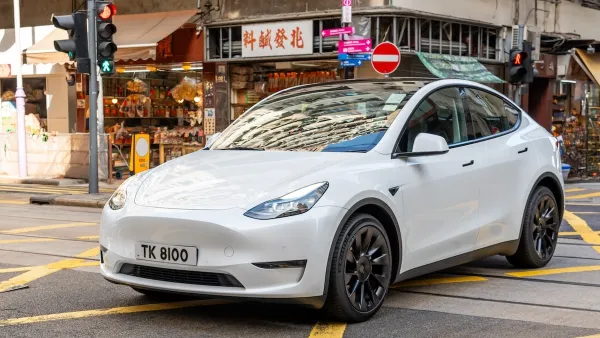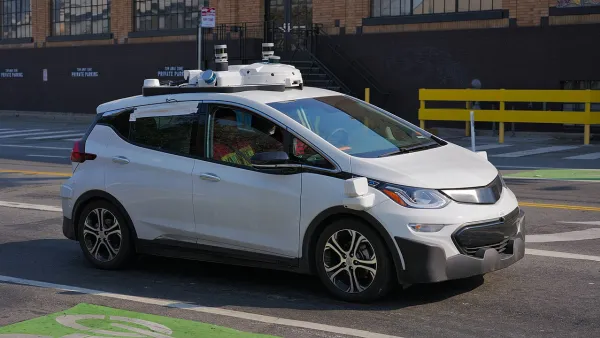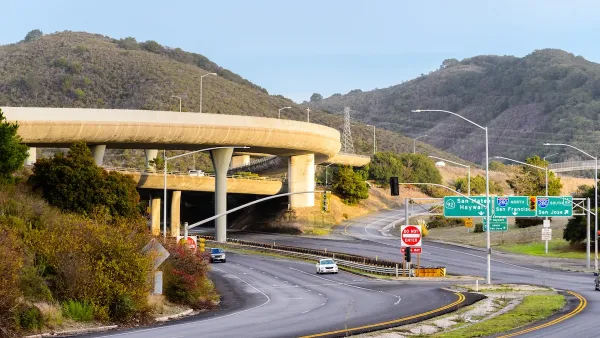Recent efforts to paint autonomous ride-hailing services as a complement to public transit are, according to CityLab’s David Zipper, greenwashing.

Is autonomous ride-hailing “an asset to cities and transit agencies?” In a piece for Bloomberg CityLab, David Zipper questions this assertion, which robotaxi companies are eager to make. “Transit-robotaxi synergy is an enticing message at a time when public transportation agencies face a dire funding shortage, and it could especially resonate among left-leaning residents in places like the Bay Area who value buses and trains even if they seldom use them.”
But the industry is “a wolf in sheep’s clothing,” Zipper warns. After outlining the potential problems with a Waymo promotion that encourages people to get dropped off at Bay Area transit stations, Zipper notes that “According to a 2022 study of the region, just 0.4% of the region’s transit journeys included a ride-hail trip.”
Automobiles inflict damage that many cities are now trying to reverse by encouraging transit or biking, which are far more space-efficient and sustainable than even an electric car, autonomous or not.
Zipper adds that autonomous ride-hailing will likely follow the same pattern as its human-driven predecessors, which did not yield an increase in transit trips and often created more congestion. “In fact, a surge in self-driving cars would likely be a net negative for transit (even if the vehicles do not squat on transit lines and bus stations, as has happened repeatedly in San Francisco).”
FULL STORY: Robotaxis Are No Friend of Public Transportation

National Parks Layoffs Will Cause Communities to Lose Billions
Thousands of essential park workers were laid off this week, just before the busy spring break season.

Retro-silient?: America’s First “Eco-burb,” The Woodlands Turns 50
A master-planned community north of Houston offers lessons on green infrastructure and resilient design, but falls short of its founder’s lofty affordability and walkability goals.

Delivering for America Plan Will Downgrade Mail Service in at Least 49.5 Percent of Zip Codes
Republican and Democrat lawmakers criticize the plan for its disproportionate negative impact on rural communities.

Test News Post 1
This is a summary

Test News Headline 46
Test for the image on the front page.

Balancing Bombs and Butterflies: How the National Guard Protects a Rare Species
The National Guard at Fort Indiantown Gap uses GIS technology and land management strategies to balance military training with conservation efforts, ensuring the survival of the rare eastern regal fritillary butterfly.
Urban Design for Planners 1: Software Tools
This six-course series explores essential urban design concepts using open source software and equips planners with the tools they need to participate fully in the urban design process.
Planning for Universal Design
Learn the tools for implementing Universal Design in planning regulations.
EMC Planning Group, Inc.
Planetizen
Planetizen
Mpact (formerly Rail~Volution)
Great Falls Development Authority, Inc.
HUDs Office of Policy Development and Research
NYU Wagner Graduate School of Public Service





























